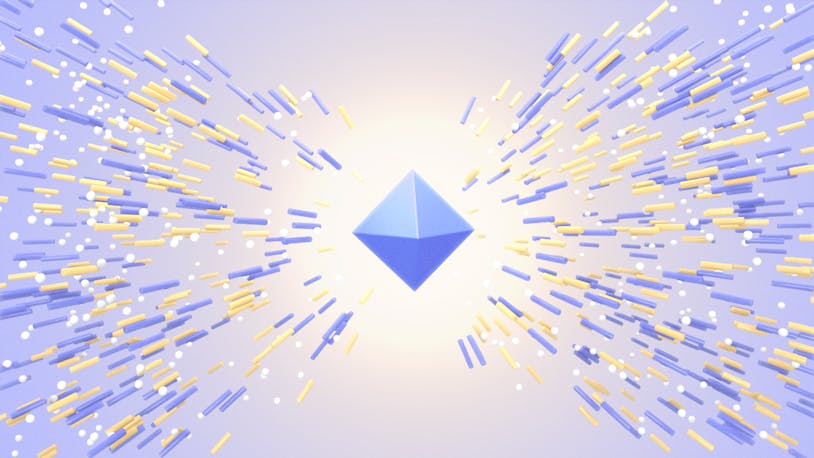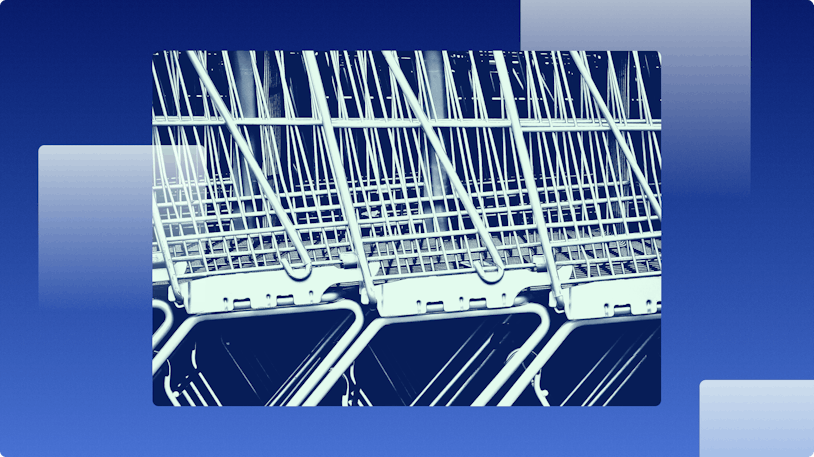Customer Acquisition Cost Explained: Strategies for Sustainable Growth


Customer acquisition cost, more commonly known as CAC, is an essential metric that helps companies measure the resources that are used for acquiring a single customer. This includes the financial costs you incur during marketing as well as the human resources used in sales and everything in between.
In this comprehensive guide, we'll explore what CAC is and why it’s important, how to calculate it, and strategies to improve it.
What is customer acquisition cost?
In the simplest terms, customer acquisition cost (CAC) is the total amount of resources used by a company to acquire a new customer. It’s basically the price you pay to convince a potential customer to buy your product or service.
Resources included in the calculation of CAC aren't limited to just monetary expenditures. They also include various other aspects like time invested, efforts made by your marketing and sales team, and other related costs. All of these divided by the total number of new customers you acquire gives you your CAC.
For businesses, especially in the Software as a Service (SaaS) industry, understanding the meaning of CAC is a matter of survival. This is mainly because, in these business models, the cost to acquire a new customer is often higher than the initial price that the customer pays for the service.
Knowing how much it costs you to bring in new customers can help you understand whether your investment in acquiring that new customer makes financial sense. It also helps you gauge the effectiveness of your marketing initiatives and adjust your strategies if required.
Customer acquisition vs. customer satisfaction
Customer acquisition and customer satisfaction may seem different, but they’re actually highly interconnected.
Customer acquisition is the process of bringing new customers into your business, and it’s required for business expansion and generating revenue. However, focusing solely on customer acquisition without adequately considering customer satisfaction can lead to a high churn rate, which in turn increases your cost of customer acquisition (CAC).
On the other hand, customer satisfaction speaks to how happy your existing customers are with your product or service. A high level of customer satisfaction can lead to increased customer retention, repeat purchases, and referrals, all of which can lower your CAC.
In essence, driving customer acquisition is crucial, but maintaining customer satisfaction is equally important — if not more important — for sustainable business growth.
How to calculate customer acquisition cost
How to calculate CAC is quite straightforward. The basic customer acquisition cost formula is:
CAC = marketing + sales costs / number of new customers acquired
Let’s break down the components:
Marketing costs: These include all the costs associated with your marketing efforts. This could be the amount of money spent on advertising, content creation, social media promotions, SEO, pay-per-click campaigns, and more.
Sales costs: This includes salaries for your sales team, commissions, bonuses, and overhead related expenses.
Number of new customers acquired: This refers to the total number of new customers you have gained in a specified time frame.
To illustrate this, let's consider a simple example. Suppose your total marketing and sales costs in a month come to $10,000. In that time, you acquire 50 new customers. Thus, your CAC for that period would be $10,000 / 50, which is $200.
This implies that you spent $200 to gain each new customer in that month.
Mastering this calculation can help you gain realistic insights into your customer acquisition strategy and understand your ROI so you can make data-driven decisions and adjust your strategy as necessary.
Factors affecting customer acquisition cost
CAC is influenced by various factors, and understanding these factors can empower you to adjust your marketing and sales strategies more effectively. Let's take a closer look at some elements that can impact your customer acquisition cost:
Marketing channels: Different marketing channels come with different costs. Paid advertising, content marketing, social media marketing, and organic search will all have varying expense levels associated with them. The effectiveness of your chosen channels and the costs involved can greatly affect your overall CAC.
Target audience: The demographics and preferences of your target audience play a significant role in determining your CAC. Certain audience segments may be more expensive to market to due to high competition, whereas others might be less expensive due to lower competition or a niche audience.
Industry: Your sector can also influence your CAC. Companies in highly competitive industries might face stiffer competition, making it more challenging and expensive to acquire new customers.
Competition: Higher competition can lead to businesses vying for the same customer base, which can result in escalating advertising expenses and overall acquisition costs.
Product quality and offerings: A well-crafted, high-quality product or service, paired with competitive pricing, can help reduce CAC. Generally, a good product will require less convincing, reducing the effort required to get new customers on board.
Geographic location: The geographic regions targeted by your marketing also contribute to CAC. Advertising rates and marketing costs will vary depending on the region, country, and sometimes even city.
Considering these factors and reassessing your strategies accordingly can help you make informed decisions and save on acquisition costs.
Customer acquisition cost by industry
Just as businesses vary by nature, size, and operation, CAC also varies across industries. It's important to consider these variations when setting your expectations and crafting your strategies.
Here’s an overview of how CAC can change based on different industries:
Tech/digital services
Tech and digital service companies typically have high CAC due to the technology and skill investments they require. However, their high potential customer lifetime value (CLV) often offsets this cost, making this high CAC more manageable.
Ecommerce
With competition high and margins often low, ecommerce businesses often have a challenging CAC scenario. These businesses must pay close attention to their CAC and constantly innovate to maintain their balance of value.
Help Scout's complete guide to ecommerce customer service
Tips, tactics, and inspo for scaling your ecommerce business and delighting your customers.
Check it out
Healthcare
In the healthcare industry, the cost to acquire new customers can often be high due to a heavy emphasis on trust and quality of care, which can lead to higher marketing and sales costs.
Education
Educational institutions often have a lower CAC since they mostly rely on referrals, reputation, and direct inquiries. However, ed-tech companies may face higher CAC due to the competitive market and cost of technology.
Knowing where your business stands in relation to the industry standard can offer helpful perspective and ground your CAC goals in reality. Remember, the key is not necessarily to lower your CAC but to optimize it in harmony with your customer lifetime value (CLV). So while studying your industry's norms, keep your focus on the bigger picture.
Customer acquisition cost vs. customer lifetime value
Customer aquisition cost and customer lifetime value work hand in hand, and understanding their relationship is crucial for any business.
While CAC is the cost associated with bringing in a new customer, CLV refers to the total revenue a company can expect from a single customer account. It considers the customer's revenue value and compares that to the customer's lifespan to assess the net profit attributable to that specific customer.
Ideally, the value derived from a customer (CLV) should be greater than the cost spent on acquiring them (CAC). Otherwise, the business is making less money from the customer than it is spending to get them on board — an overall loss for the business.
This relationship is often represented as a ratio. A healthy CLV:CAC ratio is considered to be 3:1, where the value of a customer is three times more than the cost of acquiring them. If this ratio starts to get lower, you might be over-investing in acquisition costs and need to adjust your strategy. Conversely, if the ratio is too high, it may suggest that you need to invest more in growth opportunities before competitors do.
While CAC and CLV are separate metrics, they are intrinsically linked and important for a balanced and profitable business strategy. Observing these two factors together, adjusting, and refining them can be a game changer for long-term business profitability.
How to improve CAC: Strategies and best practices
Improving CAC involves implementing strategies to both decrease costs and increase the quality of customers you attract. Here are some CAC marketing strategies and best practices to consider:
Aim for high-quality leads: Not all leads are created equal. Some will engage more, convert into paying customers, and likely stick around longer. High-quality leads not only help lower the CAC but also increase CLV.
Optimize your marketing channels: Some channels might work better than others for your business. When you find a marketing channel that offers a high return on investment, focus more of your budget and effort there.
Improve conversion rates: Optimizing your website for conversions can reduce your CAC. Test different elements of your website, like headings, calls to action, site speed, and navigation to reduce friction in the user experience.
Customer retention strategies: It's often cheaper to retain existing customers than to research, market to, and attract new ones. Look for ways to increase customer loyalty through excellent service and adding value wherever possible.
Referral programs: Happy customers are your best advocates. Implementing a referral program can not only attract new customers at a lower cost but also help in increasing engagement and loyalty of your existing customers.
Superior customer support: Customer support plays a crucial role in retaining existing customers and winning over new ones.
Boost retention through quality support
Providing outstanding customer support is one of the best ways to keep retention high. In fact, according to the research, great customer support increases the chance of repeat purchases and renewals by 82%.
Using a customer support platform like Help Scout simplifies the process of delivering high-quality, human-centric support and is a great step to take toward boosting your retention rates. Here's how Help Scout enables you to provide excellent support:
Shared inbox: Allows for collaborative resolution of customer queries, ensuring no request is left unanswered.
Knowledge base: Create and store articles to help customers find answers independently, reducing response time and freeing up your team for more complex issues.
Beacon: Embed a customizable chat widget on your website, enabling customers to access self-help articles, make direct inquiries, and communicate with your support team.
Messages: Deliver proactive, personalized, and targeted messages to your customers, providing timely and relevant support.
Choosing the right customer support platform is a strategic move for your business that helps you prioritize the customer's experience and demonstrate your commitment to their satisfaction.
CAC as a cornerstone of business success
Understanding and optimizing CAC is crucial for business growth and long-term profitability, and quality customer support not only enhances customer retention but also greatly contributes to improving CAC. By addressing customers' needs promptly and effectively, maintaining lasting relationships becomes easier, ultimately resulting in higher lifetime value for each customer.
If you're looking to improve your CAC through enhanced customer support, consider giving Help Scout a try. Our platform can significantly streamline your support processes while keeping customer satisfaction and human connection at the forefront.
Try the customer support platform your team and customers will love
Teams using Help Scout are set up in minutes, twice as productive, and save up to 80% in annual support costs. Start a free trial to see what it can do for you.
Try for free
Customer acquisition cost FAQs
Still have questions? Here are answers to common questions surrounding the topic of CAC.
What is CAC?
Customer acquisition cost (CAC) is the cost associated in convincing a potential customer to buy a product or service. It's calculated by dividing all the costs spent on acquiring more customers (marketing expenses) by the number of customers acquired in the period the money was spent.
What is the CAC formula? How do I calculate CAC?
The basic customer acquisition cost formula is:
CAC = marketing + sales costs / number of new customers acquired
Why is CAC important?
CAC is an important metric for businesses as it determines the value and efficiency of their customer acquisition efforts. It's crucial for understanding how much investment it takes to earn a new customer, and this can influence pricing, marketing strategies, and budget allocation.
How can I reduce my CAC?
Reducing CAC can be done through several strategies such as aiming for high-quality leads, optimizing your marketing channels, improving conversion rates, enhancing customer support, focusing on customer retention, and implementing referral programs.
What is a good CAC?
The definition of a “good” or “healthy” CAC can differ based on different industries and businesses. However, in general, your CAC should be less than the lifetime value of a customer (CLV). A good CLV:CAC ratio is considered to be 3:1, meaning the value of a customer should be three times more than the cost of acquiring them.
What's the difference between CAC and CLV?
CAC refers to the cost associated with acquiring a new customer, whereas CLV represents the total revenue a company can expect from a single customer over their lifetime. Understanding both metrics and their relationship can help optimize business strategies for profitability.
Does CAC include salaries?
The simple answer is, it depends. When calculating CAC, it's important to take into account all direct costs associated with acquiring new customers. If salaries or portions of salaries are directly related to these endeavors (think sales teams or specific marketing positions) then they should be included in CAC. However, salaries that are not directly involved in customer acquisition should not be part of the calculation.
The Supportive Weekly: A newsletter for people who want to deliver exceptional customer service.


